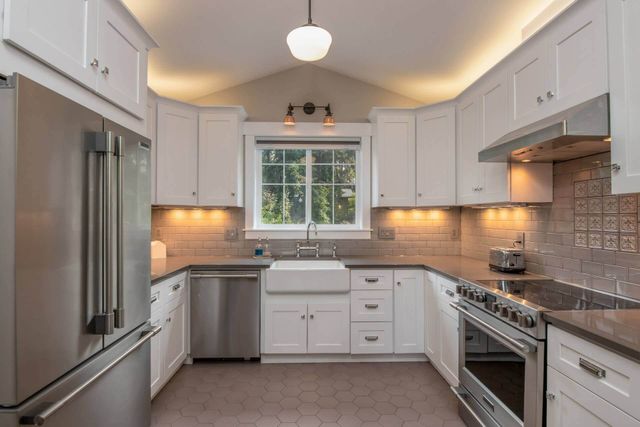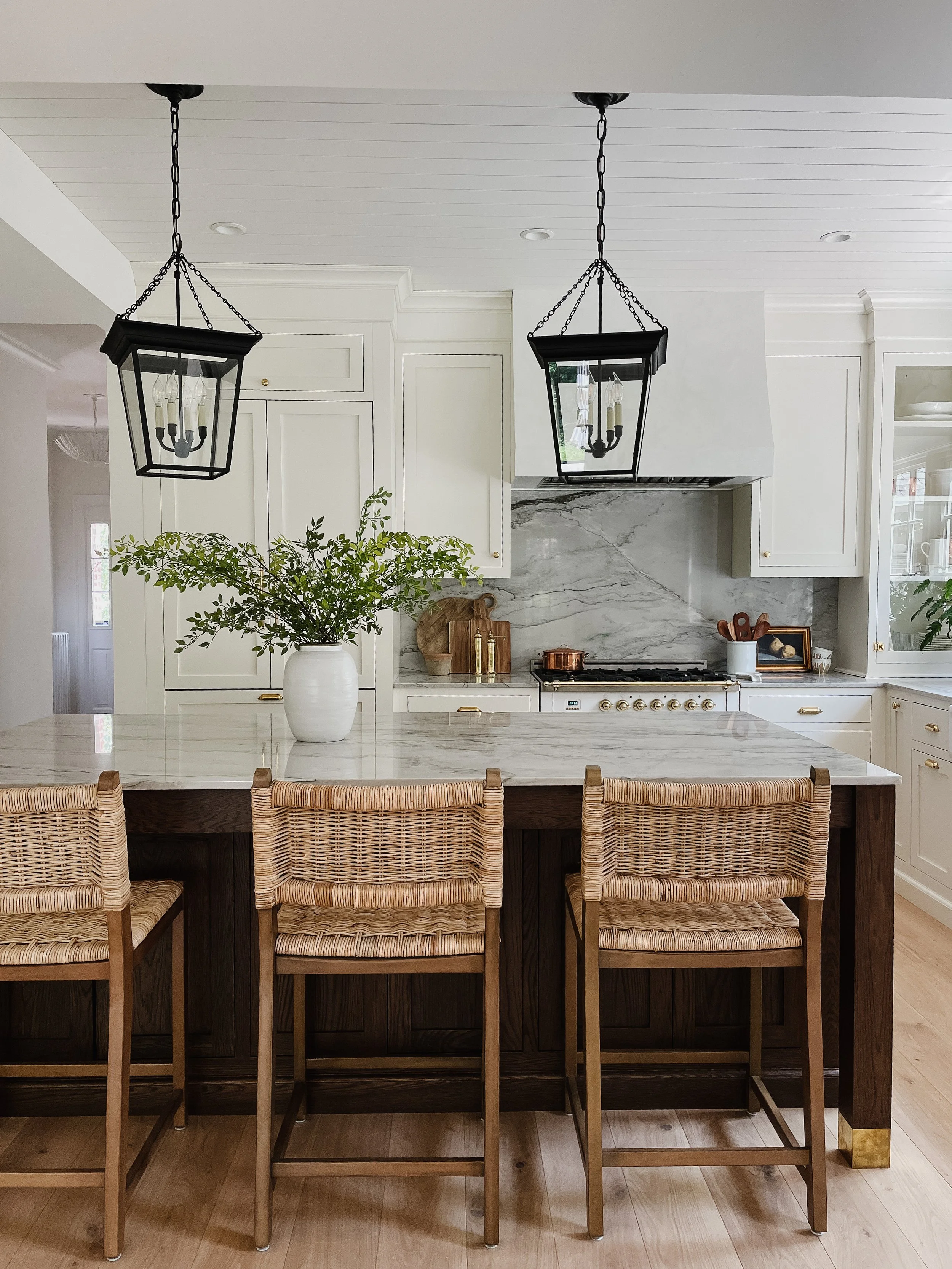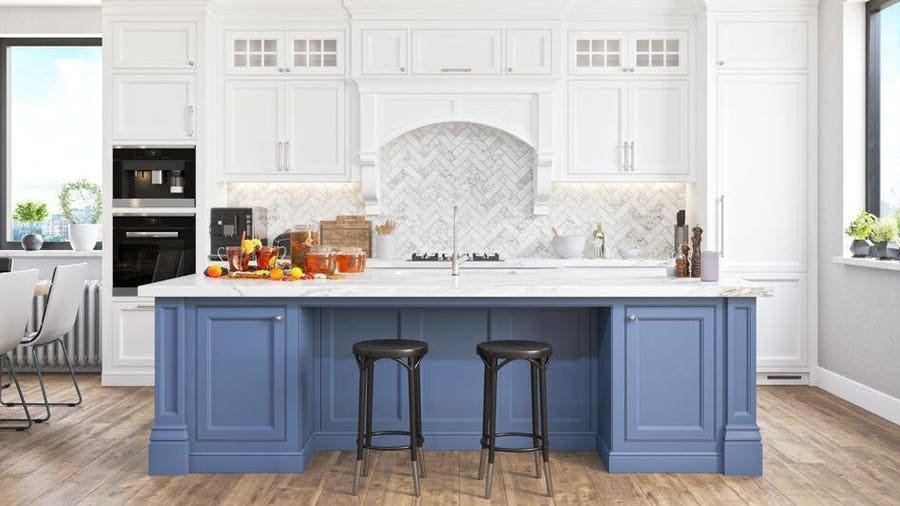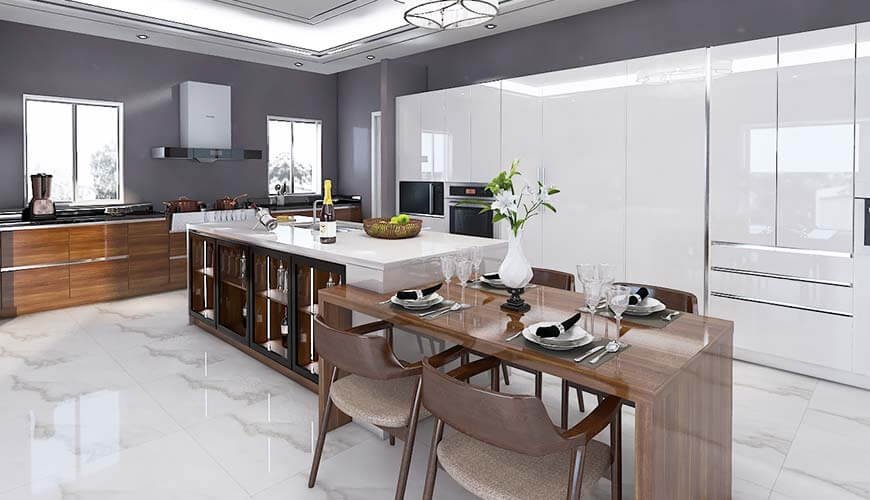High-quality materials and skilled craftsmanship make kitchen cabinets expensive. Customization and intricate designs also increase costs.
Kitchen cabinets are a significant investment in any home renovation. Quality materials like hardwood, plywood, and premium finishes elevate their price. Skilled craftsmanship ensures durability and aesthetic appeal, which also adds to the cost. Customization options, such as unique sizes and intricate designs, further increase the expense.
Professional installation, required for a perfect fit and finish, contributes to the overall cost. Investing in high-quality kitchen cabinets can enhance your kitchen’s functionality and boost your home’s value. Thus, understanding the factors behind the cost can help you make informed decisions for your renovation project.
Table of Contents
ToggleMaterial Choices
Kitchen cabinets can be expensive. The material choice plays a big role. Different materials affect the cost and quality. Let’s explore the options.
Wood Types
Wood is a popular choice for kitchen cabinets. It offers durability and beauty. Different wood types include:
- Oak: Strong and durable. It has a distinct grain pattern.
- Maple: Smooth and fine-grained. It is less expensive than oak.
- Cherry: Rich color and smooth texture. It darkens over time.
- Pine: Softwood, affordable but prone to scratches.
Each wood type has unique characteristics. These impact the overall cost and look of your kitchen cabinets.
Composite Materials
Composite materials are also common in kitchen cabinets. They are often less expensive than solid wood. Popular composite materials include:
- MDF (Medium-Density Fiberboard): Made from wood fibers and resin. It is smooth and easy to paint.
- Plywood: Made from layers of wood veneer. It is strong and stable.
- Particleboard: Made from wood chips and resin. It is affordable but less durable.
Composite materials provide cost-effective options. They offer versatility and can mimic the look of real wood.
Understanding these material choices helps. You can make an informed decision for your kitchen cabinets. Choose the best option that fits your budget and style.

Construction Quality
The cost of kitchen cabinets often surprises many homeowners. A significant factor in their price is construction quality. Well-built cabinets require skilled craftsmanship and high-quality materials. Let’s explore two key aspects of construction quality: Joinery Techniques and Durability Factors.
Joinery Techniques
Cabinet makers use advanced joinery techniques to ensure strength and longevity. These techniques include:
- Dovetail Joints: Interlocking pieces fit together like puzzle pieces. They are extremely strong.
- Mortise and Tenon: A protruding tenon fits into a mortise slot. This adds durability.
- Rabbet Joints: A groove cut into one piece fits another piece. This technique increases stability.
These methods require precision and time, which adds to the cabinet’s cost.
Durability Factors
Durability is crucial for kitchen cabinets. They endure daily wear and tear. Key factors affecting durability include:
| Factor | Details |
|---|---|
| Material Quality | High-quality wood or plywood lasts longer and resists damage. |
| Finish | Durable finishes protect wood from moisture and scratches. |
| Hardware | Sturdy hinges and drawer slides ensure smooth operation for years. |
Investing in quality materials and finishes increases the initial cost. However, it saves money in the long run by reducing maintenance and replacement needs.
Customization Options
One of the primary reasons for the high cost of kitchen cabinets is the extensive customization options available. Customization ensures that every detail matches your vision and needs. Let’s delve into the specifics of these customization options.
Custom Vs. Stock
Custom cabinets are made to order, allowing for personalized design, dimensions, and materials. This bespoke approach means every cabinet fits your kitchen perfectly. On the other hand, stock cabinets are mass-produced and come in standard sizes and finishes.
Here’s a comparison table to illustrate the differences:
| Aspect | Custom Cabinets | Stock Cabinets |
|---|---|---|
| Fit | Exact | Standard |
| Design | Personalized | Limited |
| Material | Choice of Quality | Pre-Selected |
| Cost | Higher | Lower |
Design Flexibility
With custom cabinets, you enjoy unparalleled design flexibility. You can choose any color, finish, or hardware to match your kitchen’s aesthetic. This flexibility means every element aligns with your style and functionality needs.
Consider these design aspects:
- Color and Finish: Select any hue or texture.
- Hardware: Pick handles and knobs that suit your taste.
- Interior Layout: Customize the inside for optimal storage.
Such flexibility ensures your kitchen is both beautiful and practical. Customization allows for unique solutions that stock cabinets can’t provide. This level of detail contributes to the higher cost of custom kitchen cabinets.
Labor And Craftsmanship
Understanding why kitchen cabinets cost so much often boils down to two key factors: labor and craftsmanship. These elements contribute significantly to the overall price. Skilled labor and intricate craftsmanship ensure the quality and durability of your cabinets.
Skilled Labor Costs
Skilled workers build and install kitchen cabinets. Their expertise guarantees the best quality. This type of labor is not cheap. It requires years of training and experience. They use advanced tools and techniques to ensure precision. Skilled labor costs cover:
- Design and planning
- Measuring and cutting materials
- Assembling and installing cabinets
Each of these steps demands attention to detail. Mistakes can be costly and time-consuming to fix. Therefore, the labor cost is high to ensure the best results.
Craftsmanship Details
Craftsmanship involves the intricate details that make your cabinets unique. It includes:
- Custom designs
- Handcrafted elements
- High-quality finishes
Skilled artisans often handcraft custom cabinets. This level of detail takes time and precision. Each piece is unique, adding to the overall cost. High-quality finishes protect the wood and enhance its beauty. This process involves:
| Process | Description |
|---|---|
| Sanding | Prepares the surface for staining |
| Staining | Adds color and highlights the wood grain |
| Sealing | Protects the wood from moisture and damage |
The combination of skilled labor and detailed craftsmanship results in high-quality kitchen cabinets. These factors significantly impact the overall cost but ensure lasting value and beauty.
Hardware And Accessories
When considering the cost of kitchen cabinets, hardware and accessories play a significant role. These elements not only affect the cabinet’s functionality but also its overall aesthetic. Below, we delve into specific hardware and accessories that impact pricing.
Hinges And Handles
Hinges are crucial for cabinet doors. They ensure smooth opening and closing. High-quality hinges, like soft-close options, cost more. These prevent slamming and extend the cabinet’s lifespan.
Handles and knobs come in various materials and designs. Brass, stainless steel, and ceramic are popular. Custom designs or branded handles increase costs. A simple handle might cost a few dollars, while designer options can cost much more.
Special Features
Special features add to the cabinet’s functionality. Pulldown shelves and lazy Susans make items accessible. These features are convenient but add to the price.
Other special features include:
- Soft-close drawers
- Built-in lighting
- Integrated waste bins
These features enhance the kitchen experience but come at a cost. Investing in these can make your kitchen more user-friendly and stylish.
| Feature | Approximate Cost |
|---|---|
| Soft-close Hinges | $5 – $15 per hinge |
| Designer Handles | $10 – $50 each |
| Lazy Susan | $100 – $250 |
| Built-in Lighting | $50 – $200 per light |
These costs can add up quickly, significantly impacting the final price of kitchen cabinets.

Finish And Coating
Understanding why kitchen cabinets cost so much involves examining various factors. One significant factor is the finish and coating. These elements contribute to the durability and appearance of your cabinets. The finish and coating protect against wear, moisture, and stains. They also add to the aesthetic appeal, making your kitchen look elegant and refined. Below, we’ll explore the key aspects of finishes and coatings.
Paint And Stain
Paint and stain choices impact both the look and cost of cabinets. Paint offers a smooth, modern finish. It’s available in various colors and sheens. Stain, on the other hand, enhances the natural beauty of wood. It seeps into the grain, highlighting its features.
- Paint: Requires more prep work and multiple coats. Offers a uniform appearance.
- Stain: Less labor-intensive but needs a clear sealant. Shows off wood’s natural texture.
Both options require skilled labor. This adds to the overall expense. The choice between paint and stain depends on personal preference and style.
Protective Coatings
Protective coatings are essential for the longevity of your cabinets. These coatings shield against moisture, heat, and daily wear. There are several types to consider.
- Polyurethane: Provides a durable, water-resistant finish. Commonly used for high-traffic areas.
- Varnish: Offers excellent protection and a natural look. Ideal for preserving wood grain.
- Lacquer: Dries quickly and offers a glossy finish. Perfect for a sleek, modern kitchen.
Each coating type has its pros and cons. Polyurethane is tough but can yellow over time. Varnish enhances wood’s natural look but needs regular maintenance. Lacquer is fast-drying but can be less durable.
Choosing the right protective coating involves balancing aesthetics and functionality. Skilled application of these coatings ensures lasting beauty and protection.
| Type | Durability | Appearance |
|---|---|---|
| Polyurethane | High | Matte to Glossy |
| Varnish | Moderate | Natural |
| Lacquer | Moderate | Glossy |
In summary, the finish and coating of kitchen cabinets play a crucial role in their cost. They impact both the appearance and longevity of your investment.
Installation Process
The installation process of kitchen cabinets significantly impacts their overall cost. This phase requires precision, skill, and time, often leading to higher expenses. Let’s delve into the specifics to understand why this is the case.
Professional Installation
Hiring a professional installer ensures that your cabinets are fitted correctly. Professionals have the necessary tools and experience. This guarantees a seamless finish and maximizes the lifespan of your cabinets.
Professionals also handle any unexpected issues. These might include uneven walls or floors, plumbing, and electrical adjustments. Here’s a quick look at what professional installation might include:
| Service | Description |
|---|---|
| Measurement and Layout | Ensures perfect fit and alignment |
| Cabinet Assembly | Assembling cabinets to exact specifications |
| Mounting and Securing | Attaching cabinets to walls securely |
| Finishing Touches | Adding handles, knobs, and other accessories |
Diy Considerations
Choosing the DIY route can save money but requires careful planning. You must have the right tools and some basic carpentry skills. Here are some points to consider:
- Time Commitment: DIY installations can be time-consuming.
- Skill Level: Mistakes can lead to costly repairs.
- Tools Required: You may need to buy or rent specific tools.
DIY can be rewarding and cost-effective. Follow these steps to ensure success:
- Measure your kitchen space accurately.
- Plan the layout and design in detail.
- Gather all necessary tools and materials.
- Follow instructions for assembling and mounting cabinets.
- Double-check all work for stability and alignment.
Remember, while DIY can save money, it demands patience and precision.

Market Factors
Understanding the cost of kitchen cabinets can be complex. Market factors significantly influence prices. These factors include supply and demand, regional variations, and more. Let’s delve into these aspects to comprehend why kitchen cabinets cost so much.
Supply And Demand
The principle of supply and demand affects cabinet prices. When demand is high, prices rise. The cost of raw materials influences supply. Limited availability of materials like wood and metal can drive up costs.
Craftsmanship also plays a role. Skilled labor is in high demand. This increases production costs. Imported cabinets may face tariffs and shipping fees. These factors contribute to higher prices.
Regional Price Variations
Prices vary by region due to several factors. Labor costs differ from one area to another. In regions with higher living costs, labor is more expensive. This increases the overall cabinet cost.
Transportation costs also impact prices. Shipping cabinets to remote areas costs more. Local market conditions influence pricing too. Some areas have higher demand, leading to higher prices.
| Region | Average Cost |
|---|---|
| Urban Areas | $15,000 |
| Suburban Areas | $10,000 |
| Rural Areas | $8,000 |
Regional differences make a big impact. Understanding these can help you plan better. Consider all these market factors when budgeting for kitchen cabinets.
Frequently Asked Questions
Why Are Kitchen Cabinets So Expensive?
High-quality materials and craftsmanship drive up the cost.
What Factors Affect Kitchen Cabinet Prices?
Material, design, size, and customization impact the price.
Are Custom Cabinets Worth The Cost?
Yes, they offer tailored design and superior quality.
How Do Materials Impact Cabinet Cost?
Solid wood costs more than MDF or particleboard.
Do Installation Fees Increase Cabinet Costs?
Yes, professional installation adds to the overall expense.
Can I Save Money On Kitchen Cabinets?
Opt for stock cabinets or less expensive materials.
Why Choose Custom Over Stock Cabinets?
Custom cabinets fit perfectly and meet specific needs.
Are Imported Cabinets Cheaper?
Often, but may lack quality and durability.
Do Cabinet Finishes Affect Pricing?
Yes, premium finishes like lacquer are pricier.
How Long Do Kitchen Cabinets Last?
High-quality cabinets can last up to 50 years.
Conclusion
Understanding why kitchen cabinets cost so much helps in making informed decisions. Quality materials, craftsmanship, and customization play crucial roles. Investing in durable cabinets can enhance your kitchen’s functionality and aesthetics. Remember, choosing the right cabinets can significantly impact your home’s value and your overall kitchen experience.


